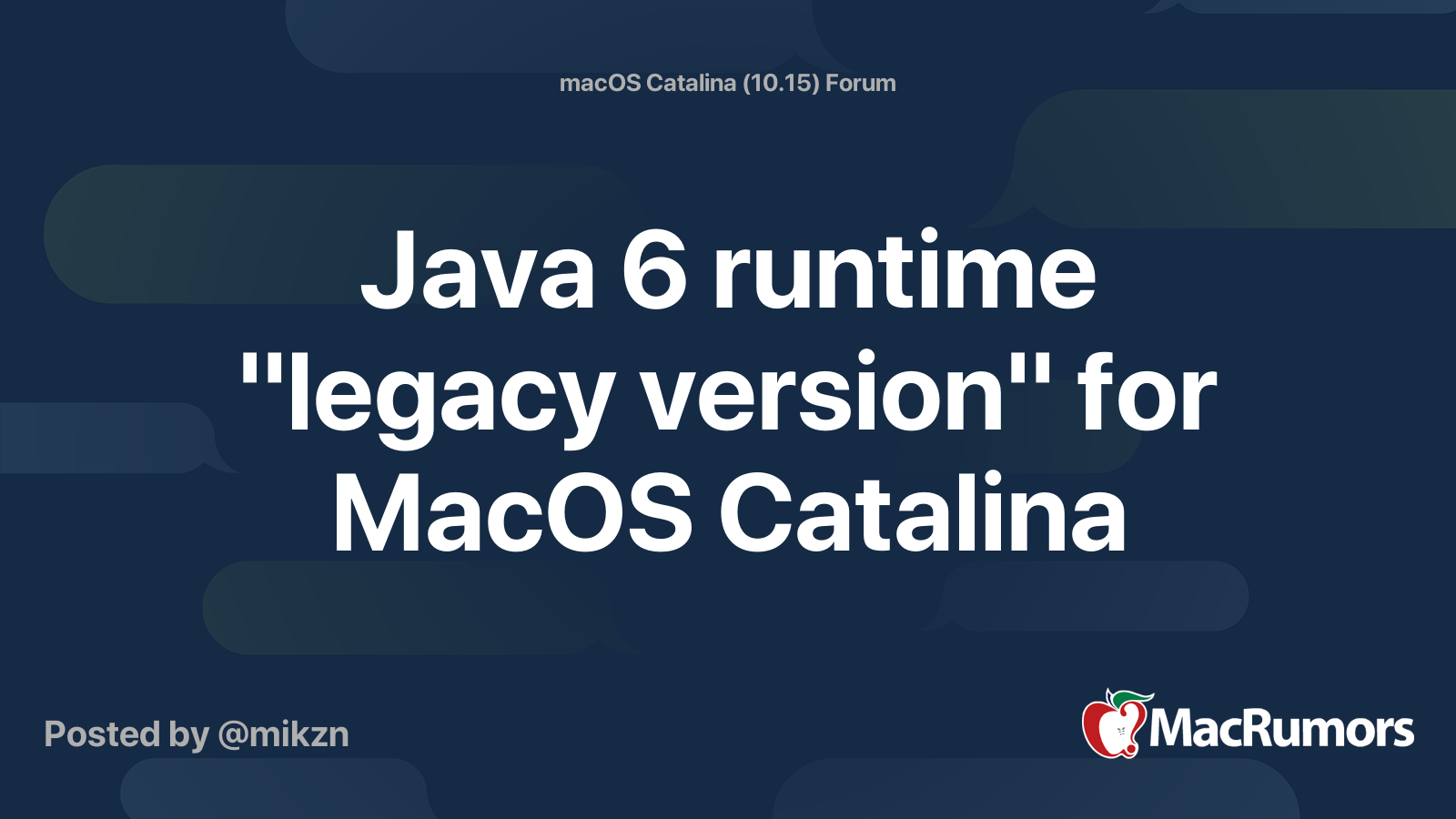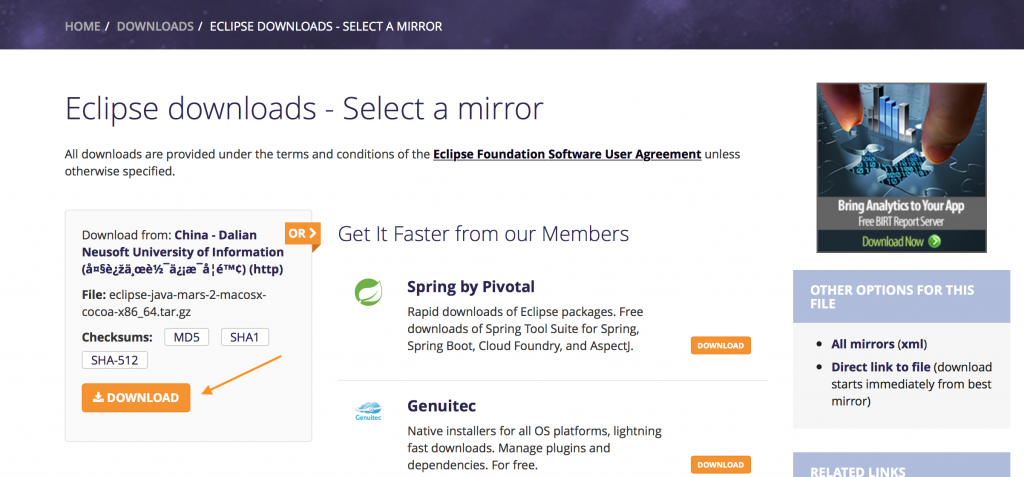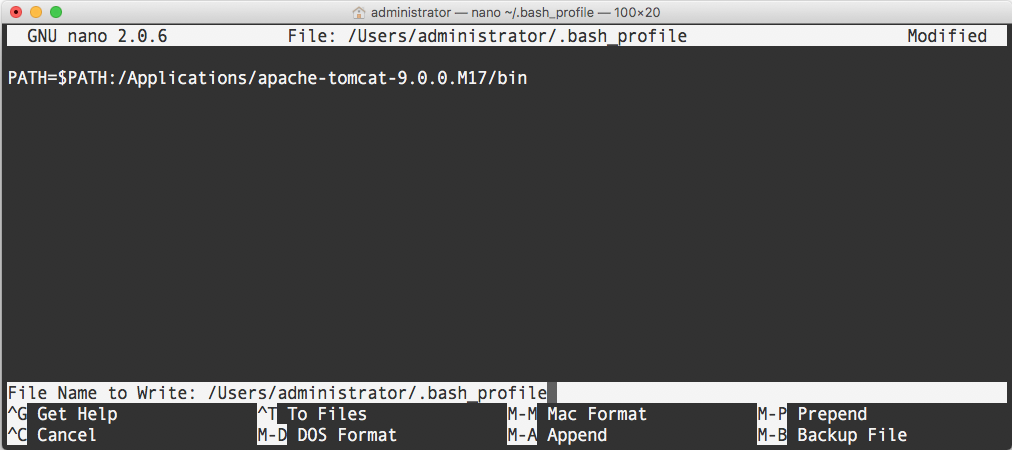- During the upgrade process to Mac OS X 10.10 Yosemite or 10.11 El Capitan, Java may be uninstalled from your system. In order to reinstall and run PDF Studio you will need to install the Java 6 Runtime again.
- What's new in Java for Mac OS X 2017-001: This package is exclusively intended for support of legacy software and installs the same deprecated version of Java 6 included in the 2015-001, 2014-001, and 2013-005 releases.
- Mac OS X 및 Apple Java 6 지원 중단. Apple은 Mac OS X 10.11(El Capitan)이 Java 6을 지원하는 마지막 OS X 릴리스라는 공지를 게시했으므로 Java 6에 종속되는 응용 프로그램을 사용하는 개발자는 앱을 Oracle에서 제공하는 최신 Java 버전으로 이전하는 것이 좋습니다.
- Download Java for OS X directly from Oracle. Get the latest version If an app or webpage you want to use asks you to install Java software, you can download the current version of Java for OS X directly from Oracle's website.
If you installed JavaForOSX.pkg from above, you don't need to install Java for OS X 2017-001. They are almost the same. JavaForOSX.pkg is JVMVersion 1.6.065-b14-462 and Java for OS X 2017-001 is VMVersion 1.6.065-b14-468. Anyway, iBackup doesn't work in my VMware vm. It crashes with this message.
This page describes how to install and uninstall JDK 8 for OS X computers.
This page has these topics:
See 'JDK 8 and JRE 8 Installation Start Here' for general information about installing JDK 8 and JRE 8.
See 'OS X Platform Install FAQ' for general information about installing JDK 8 on OS X.
System Requirements
Observe the following requirements:
Any Intel-based computer running OS X 10.8 (Mountain Lion) or later.
Administrator privileges.
Note that installing the JDK on OS X is performed on a system wide basis, for all users, and administrator privileges are required. You cannot install Java for a single user.
Installing the JDK also installs the JRE. The one exception is that the system will not replace the current JRE with a lower version. To install a lower version of the JRE, first uninstall the current version as described in 'Uninstalling the JRE'.
JDK Installation Instructions
When you install the Java Development Kit (JDK), the associated Java Runtime Environment (JRE) is installed at the same time. The JavaFX SDK and Runtime are also installed and integrated into the standard JDK directory structure.
Depending on your processor, the downloaded file has one of the following names:

jdk-8uversion-macosx-amd64.dmgjdk-8uversion-macosx-x64.dmg
Where version is 6 or later.
Download the file.
Before the file can be downloaded, you must accept the license agreement.
From either the Downloads window of the browser, or from the file browser, double click the
.dmgfile to launch it.A Finder window appears containing an icon of an open box and the name of the
.pkgfile.Double click the package icon to launch the Install app.
The Install app displays the Introduction window.
Note:
In some cases, a Destination Select window appears. This is a bug, as there is only one option available. If you see this window, select Install for all users of this computer to enable the Continue button.Click Continue.
The Installation Type window appears.
Click Install.
A window appears that says 'Installer is trying to install new software. Type your password to allow this.'
Enter the Administrator login and password and click Install Software.
The software is installed and a confirmation window appears.
Refer to
http://www.oracle.com/technetwork/java/javase/downloads/jdk-for-mac-readme-1564562.htmlfor more information about the installation.After the software is installed, delete the
.dmgfile if you want to save disk space.
Determining the Default Version of the JDK
If you have not yet installed Apple's Java OS X 2012-006 update, then you are still using a version of Apple Java 6 that includes the plug-in and the Java Preferences app. See 'Note for Users of OS X that Include Apple Java 6 Plug-in'.
There can be multiple JDKs installed on a system, as many as you wish.
When launching a Java application through the command line, the system uses the default JDK. It is possible for the version of the JRE to be different than the version of the JDK.
You can determine which version of the JDK is the default by typing java -version in a Terminal window. If the installed version is 8u6, you will see a string that includes the text 1.8.0_06. For example:
To run a different version of Java, either specify the full path, or use the java_home tool:
For more information, see the java_home(1) man page.
Uninstalling the JDK
To uninstall the JDK, you must have Administrator privileges and execute the remove command either as root or by using the sudo(8) tool.
For example, to uninstall 8u6:
Do not attempt to uninstall Java by removing the Java tools from /usr/bin. This directory is part of the system software and any changes will be reset by Apple the next time you perform an update of the OS.
Last updated: October 22, 2017
Looking for Java for Mac OS X? No matter which web browser you use with your Mac, you will need the Java plug-in from Oracle in order to view content that uses Java, such as Java applets. Java content is common on the Internet. As of the release of Java 7 Update 6, you can download and install Java for Mac OS X directly from the Java.com web site. There is no longer a need to get Java updates from the App Store (or from Software Updates). To download and install Java for Mac OS X, just follow these steps.
1. You can download, install and update Java for Mac OS X directly from the Java.com web site. Please note that the Recommended Version of Java you encounter may be different than pictured as new Java updates are released.
2. Click Agree and Start Free Download, and a download icon will display in the tool bar area of your browser. You can click the download icon to view the download progress.
3. Once completely downloaded, double-click on the box icon that displays in the notification window to start the installation process.
4. When prompted to Open the installation file, click the Open button.

5. If prompted to type a Username and Password for your Mac, input it, then click Install Helper to proceed.
6. The Installer will launch. Click Next to proceed.
7. You may be prompted to install a third-party search app. If you do not want to install the third-party search app, uncheck both check boxes. Click Next to proceed.

8. The installation will begin. A progress bar will display in the installation dialog to let you know the status.
9. A notification dialog will display when the installation has completed successfully. Click the Close button.
Java Se 6 For Mac
10. To verify your Java installation, visit the Java web site. If prompted to Activate Java, click the Activate Java link in the web page.
You may also see an address bar notification asking you to allow the web site you are visiting to run “Java”.

Click Allow Now to run Java one time, or click Allow and Remember to run Java any time the site is visited. The Java content will load in the web page…finally!
Java 6 Mac Os X Download Windows 7
Thank you for visiting Tech Help Knowledgebase to learn how to download and install Java for Mac OS X.
Tech Help Knowledgebase creates how-to articles and video tutorials for common issues, and provides technical support for the categories covered by our site.
Get Support.
